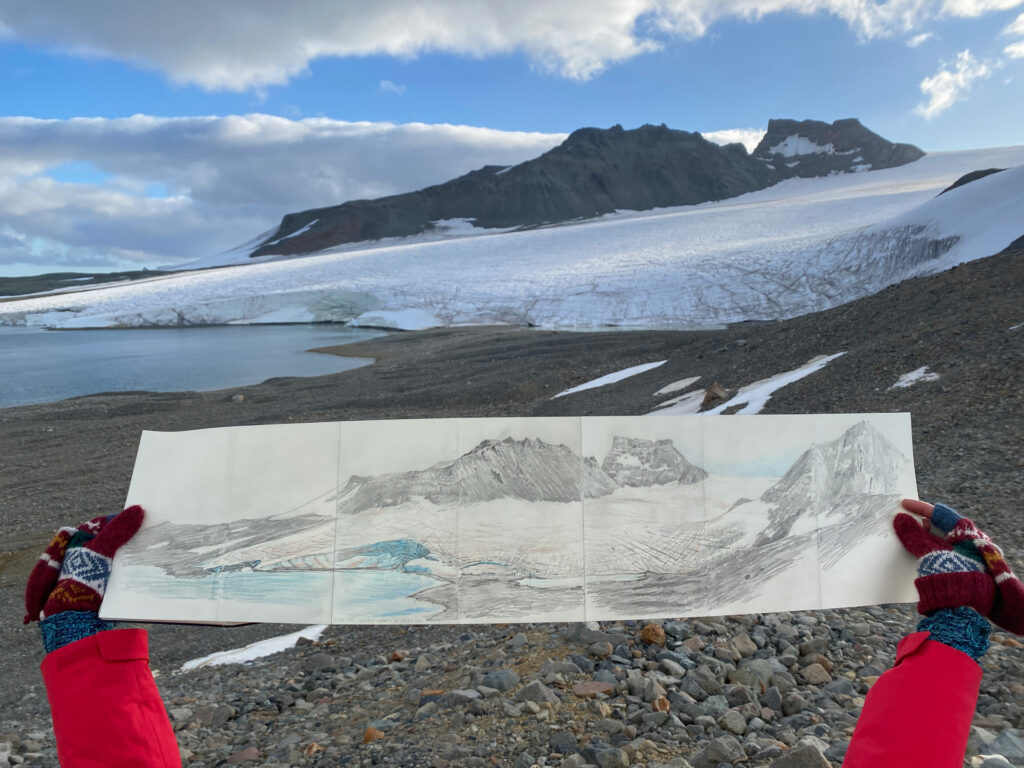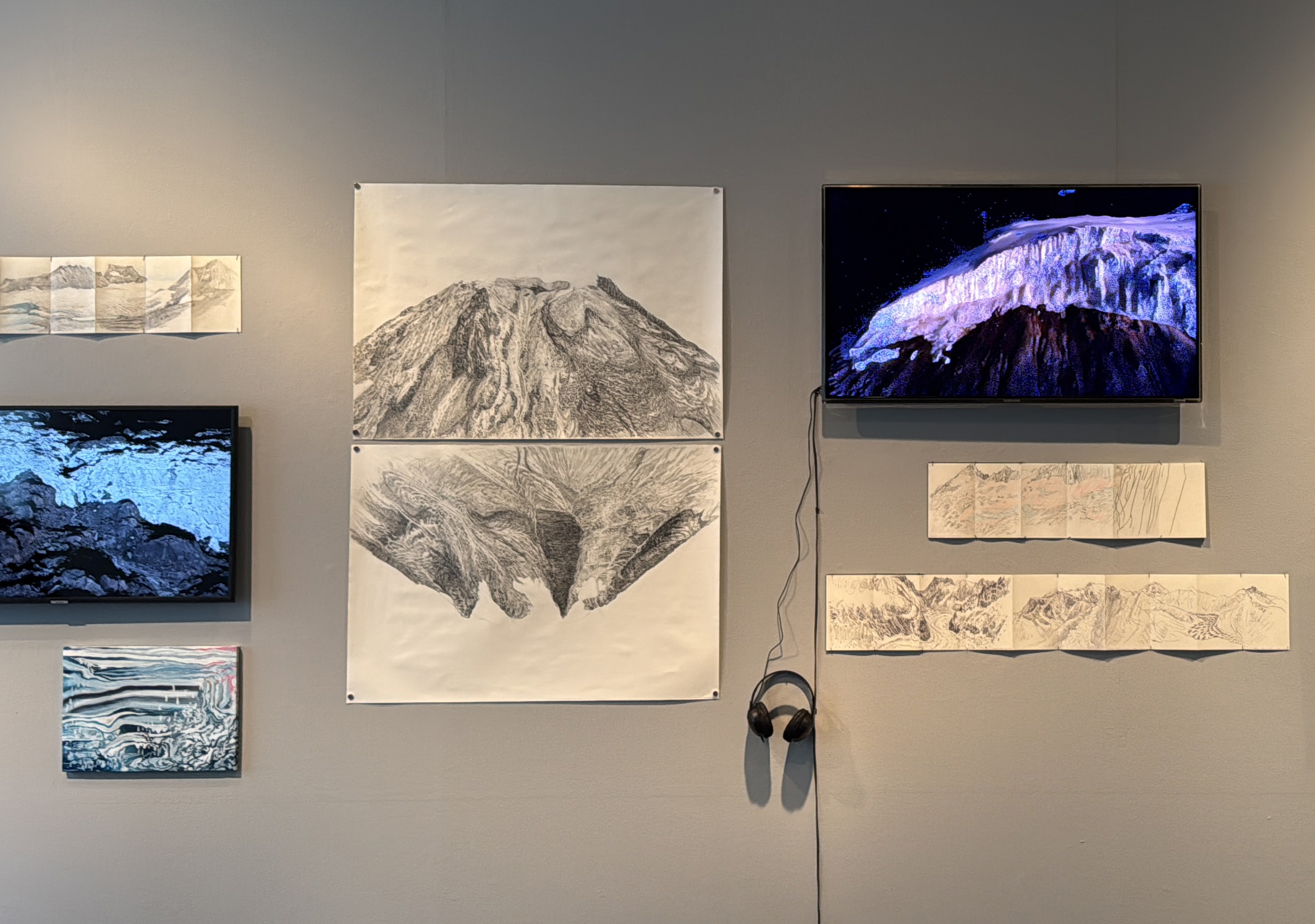An Affective Archive of the Mountain
Entering Natalia Castañeda’s studio is like witnessing a stubborn gathering of insistences. It is accessing the record of something alive, transporting yourself to an imaginary plateau surrounded by enigmatic yet undeniable peaks. This exhibition aims to convey part of the archival, tactile, and emotional experience that crossing the threshold of her studio entails.

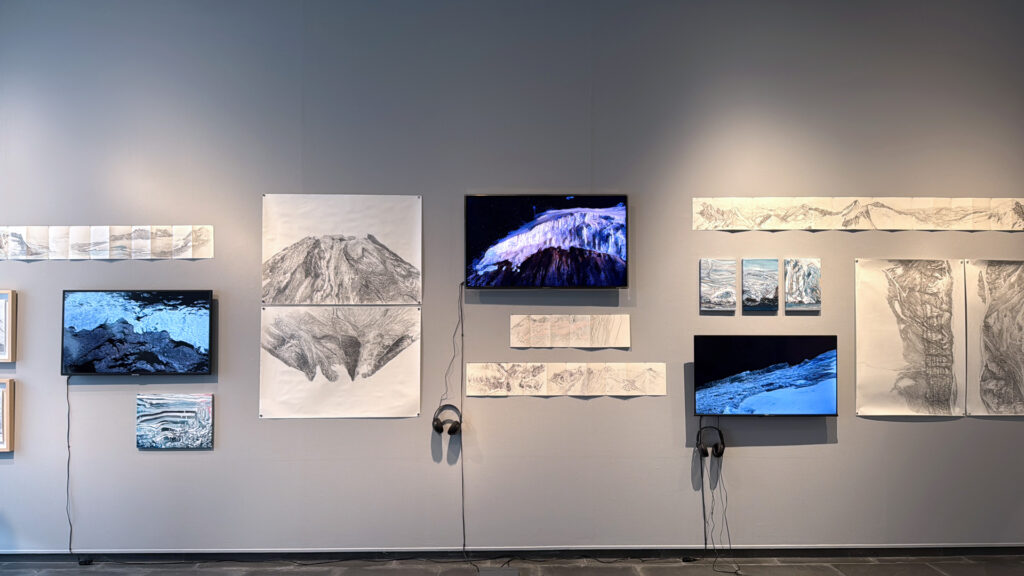
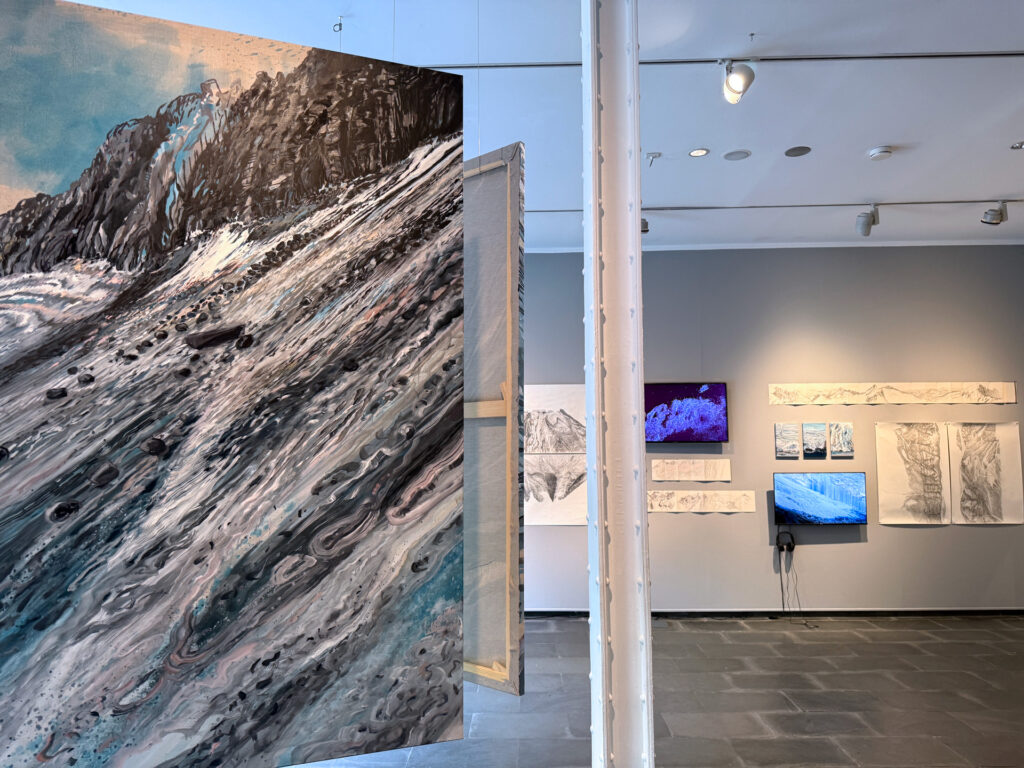
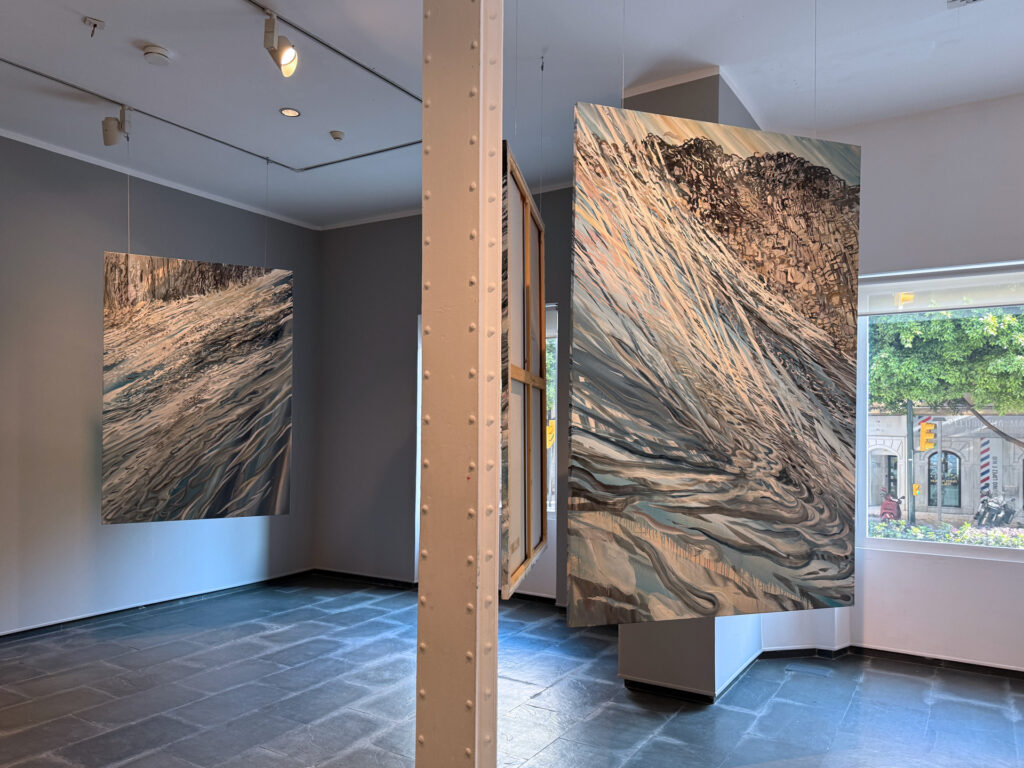
For over a decade, Natalia Castañeda has worked tenaciously from her encounter with the mountain, particularly glaciers—those massive bodies of moving water now in retreat. The rapid loss of the cryosphere drastically reduces water resources, but also means the disappearance of highly valuable paleoenvironmental information stored in ice. Glaciers are like time capsules that hold the climate history—and thus the history of the world.
Faced with this scenario, Natalia Castañeda’s practice is hard to categorize: field notes? personal memories? scientific research? philosophical reflection? political stance? cartographic exercise? geopoetic quest?… Undoubtedly, all these dimensions converge and coexist in her work.
Rediscovering the elements of a sensitive and intelligent relationship with the mountain, with the environment, with the Earth. Seeking a situated poetics, not defined abstractly but through the living. Rethinking, critically and radically, the relationship between humans and the world… These are the ideas that sustain Natalia Castañeda’s praxis, opening up a potential space between science, art, and environmental activism.
That is why the exhibition is made up of a hybrid body of works combining videos, notebooks, sketches, drawings, cartographies, and paintings of various glaciers: Dulima, Poleka-Kasue, and Kumanday in her native Colombia, using their ancestral names; Aneto and Cadí-Moixeró in Huesca and Catalonia, respectively. Also included are works from Mont Blanc and from her recent stay in Antarctica. All these materials are exhibited equally, without visibility or reading hierarchies. This is a deliberate gesture to highlight the overlap of different representational forms, emphasizing the richness of her practice, the myriad of approaches, and the impossibility of grasping, fixing, or capturing the enormity, depth, and latent energy of her subject of interest.
The videos are based on photogrammetry: images of different mountains captured by drones at different times, later modeled in 3D. Natalia Castañeda then re-films the resulting model, this time giving it movement and a kind of cartographic animation. The result is a highly plastic and hypnotic play that also incorporates image voids and visual glitches. These short loops of Aneto, Dulima, and Antarctica give us a tactile, almost material image that engages the body and transcends the distanced satellite-cartography image. But in some of the videos, the voids caused by technical errors overlap with another kind of void, more real and more dramatic: as we progress through images taken in different years, we witness the rapid disappearance of glacial masses. Visual errors, which hold accidental magic and offer unintended revelations, mingle with the harsh topographical truth of the terrain.
Her paintings, on the other hand, are visualization devices of the mountain—not through the spectacular image of the drone, but through a subjective interpretation forged in direct bodily relationship with the object of study, like a tactile record of mountain dynamics in dialogue with her personal experiences. A vibrant and luminous painting technique speaks of a fabulist and affective approach to the mountain—one that reflects the relationships between the material mountain and the metaphorical one.
Among her drawings and notes, we find pieces with varying degrees of finish—from more complete to sketchier ones, depending on the work stage. There are field notebooks with in situ notes, marked by a quick, energetic, and vibrant line. There is life, body, and touch in these sketches made under the harsh climatic conditions of a glacier. There are larger drawings that delicately portray suggested profiles of peaks, slopes, and ridges—as if the artist seeks to highlight their inner essence rather than emphasize their iconic outer form. There are more elaborate cartographies that show, with care and precision, the glaciers’ surface. But all these works share a common feature: by removing the horizon, the materiality of what is represented becomes the focus. Matter, once again, takes center stage in these works, shifting from landscape to geological subject with agency.
For all these reasons, we can affirm that Natalia Castañeda’s work oscillates between a rational, scientific, topographic, and documentary approach to the mountain and a mythical, poetic, affective, and sensory one. To reflect this methodological heterodoxy, the exhibition opts for a selection of materials that show both thoroughness and a sense of incompleteness and fragmentation. What emerges is an exploration of the limits of rational knowledge through amalgamation, elusiveness, and chaos.
Mountain peaks and their ascent are often associated with the idea of an all-seeing observer—one who controls everything from the summit. In contrast, Natalia Castañeda does not look downward and outward, as if seeking absolute knowledge, but instead looks along and inward—into the mountains and glaciers—searching for their materiality and, within it, their profound mystery. This gesture resonates with the ideas of philosopher Maurice Merleau-Ponty, who affirmed that we are embedded in the flesh of the world. The world is not the immutable object presented by the social or natural sciences, but is endlessly relational. Our perception of it is made possible through our bodies and our sensory and motor functions. We are co-natural with the world, and it with us, yet we only ever perceive it partially. Humans accumulate data patiently, but it’s not enough. Knowledge is an ally of mystery—not its enemy. We must accept that we are not meant to fully know: “One never truly knows the mountain, nor oneself in relation to it,” wrote Nan Shepherd in her book The Living Mountain.
That is why this exhibition has been conceived as a sensory space that celebrates the emotion and mystery of glacial matter, while also warning us of its looming disappearance. That is also why this exhibition is a stubborn collection of insistences, the record of something alive, an imaginary plateau surrounded by enigmatic and yet inescapable peaks.
Patricia Marqués. May 2025
